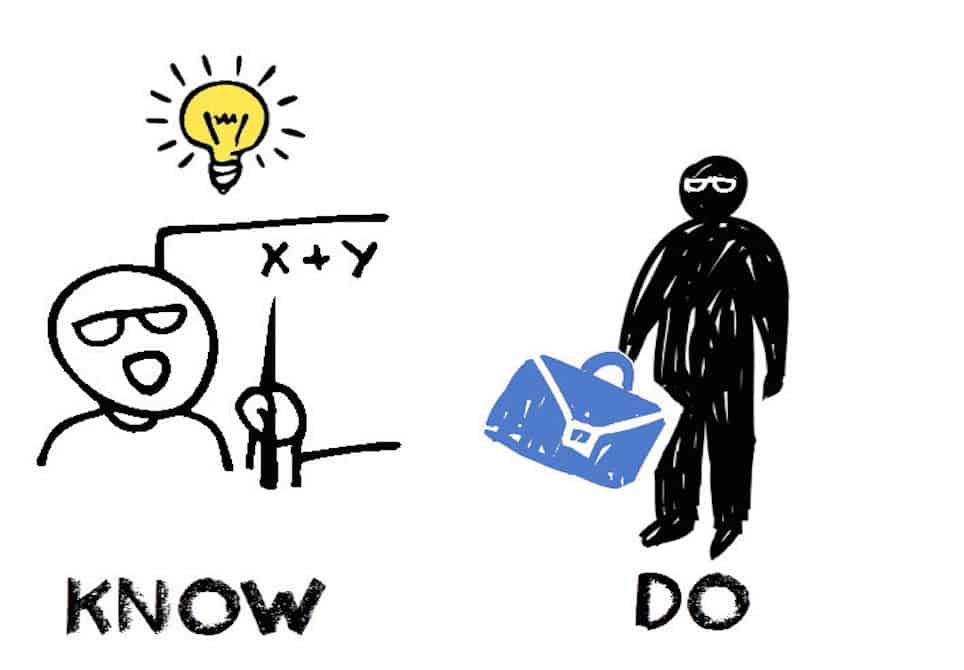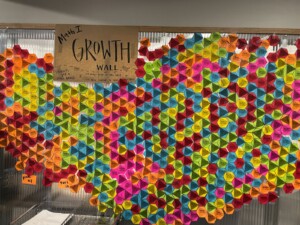What the Story of Asdiwal Can Teach Us About Competency-Based Education

Todd Hitchcock
It was the late ’80’s and I needed one more elective to complete my undergrad degree in Business Administration. Amid Management Science, Cost Accounting, and Finance, I needed something to take the edge off. Pacific Northwest Coast Indians, a third-year Anthropology course looked like it would do the trick.
It was an entire semester listening to a single story – a mythical story of the Tsimshian Indians about a boy named Asdiwal. As a young boy, Asdiwal was given a few magical objects by his father (I can’t remember his name) – a bow, arrows and quiver, a raincoat made of bark, snowshoes, and a lance. With these, he could hunt and never miss his prey, make himself invisible, and bring back an inexhaustible supply of food to his tribe.
One day while hunting Asdiwal sees a white bear and tracks it. He follows it up a ladder that leads into the sky. The white bear turns into a beautiful woman, Evening-Star, who, after Asdiwal proves to her father he is worthy by performing numerous feats of strength, he marries.
That was the first two weeks of the course. The rest of the course traced Asdiwals’ life as he went back to earth and the journey he took as part of a matrilineal society.
While I very much enjoyed that class (even though I took it on a lark), until today, I have never been able to use what I learned in that course in my professional career. By no means do I want to devalue the study of Northwest Coast Indians. For me, at the time, it was very interesting and met an elective requirement – but did not have direct applicability to employability in my field.
That noted, it is difficult to imagine what the ‘Competencies’ would look like for that course. In order for an institution of higher education to develop and deliver Competency-Based Education (CBE) programs, many things must be in place to insure their success. I am going to touch on one of them – Competencies.
For those new to CBE, one thing that higher education leaders must embrace is that both Competencies and Assessments must align to industry standards and practices. Colleges and Universities are experts at developing Learning Objectives and Learning Outcomes but Competencies are different. At the risk of dramatically over-simplifying the complexity of developing competencies, below are five key items that are imperative to those embarking on developing CBE programs:
- In general, competencies outline what a learner will be able to ‘Know and Do’ in order to show mastery. They outline and assess the applied skills and knowledge the individual requires. While Learning Outcomes are specific and measurable, oftentimes they do not focus on the application of the knowledge – a key to CBE.
- Competencies must be created at the program level. True CBE programs do not have individual courses and thus, competencies must be written at the program level and then segmented out. This is a dramatic departure from the traditional degree program design and continues to be an experiment for many institutions of higher education and at the same time the Department of Education (i.e. the DOE’s latest Dear Colleague’s letter outlining Direct Assessment and experimental sites)
- Competencies are not written in isolation by a single expert group. The gold standard is to have competencies developed by Competency Counsels that have representation from both institutions of Higher Education AND Industry. While some Professional Degrees have competencies defined by industry, many do not. For example, there are no National or State competencies for Teacher Education but it is very well suited for delivery through CBE (think of all of the teachers who enter the profession from previous careers / professions). In this case the competencies should be developed by multiple stakeholders including; Faculty, Deans, State Licensing Boards, School Districts, K-12 Teachers, and Departments of Human Resources (after all, they have deep knowledge in who the successful teachers are and the massive group that leave the profession during their first five years).
- Competencies need to be re-evaluated on a periodic basis. It is sad to say but some on-ground faculty have laminated their lesson plans from 20 years ago and what is taught today is the same as then. This will not work in CBE programs. As industry changes, so do the requirements to keep the competencies aligned. Competency evaluation and constant alignment to industry is a must.
- The assessment strategy developed for CBE programs is CRITICAL. Often and mistakenly overlooked until late in the process for program design, the assessment strategy can make or break a CBE program. Not only does the assessment strategy need to be balanced to evenly evaluate all competencies, it also needs to ensure a mix of objective and subjective assessment. Multiple choice, short answer, and essay questions alone do not suffice in CBE programs. High quality performance-based assessments need to be developed in order to assess the learners’ ability to apply the knowledge they have learned (i.e. the ‘Do’ component).
One of the keys to re-imagining higher education is to move beyond binary thinking. Not everything has to be delivered online or on-ground, not every classroom needs to be blended or flipped, and certainly all programs are not well suited for delivery through a CBE framework. While pure-play knowledge-based courses have tremendous value, they are not all suited for all types of delivery.
While Asdiwal may have taught me the importance of consuming a high fat diet in order to survive a brutal Northwest Coast winter, I never did learn how to make my own snowshoes, trap, or hunt in order to procure the meat to do it. The CBE programs that grow, prosper, and endure, will combine knowledge and application that is tightly aligned to skills, expertise, and industry expectation resulting in greater employability for all those who enroll. Defining and sharpening the competencies is a key component to this.
For more on CBE see:
- The Shift from Cohorts to Competency
- 5 Ways Learner Profiles Can Promote Competency-Based Education
- New Competency-Based Professional Learning Model for Educators
Stay in-the-know with all things EdTech and innovations in learning by signing up to receive the weekly Smart Update.






0 Comments
Leave a Comment
Your email address will not be published. All fields are required.